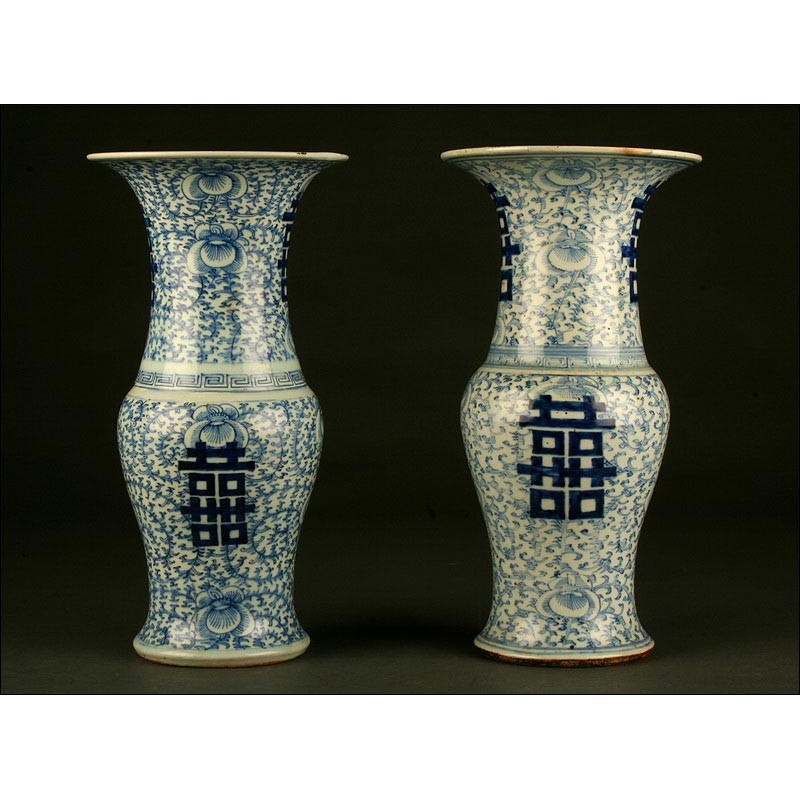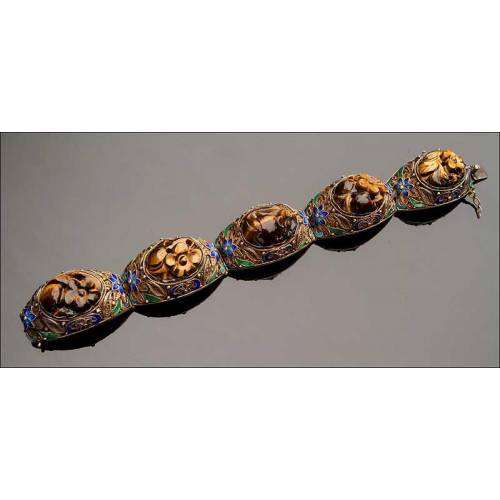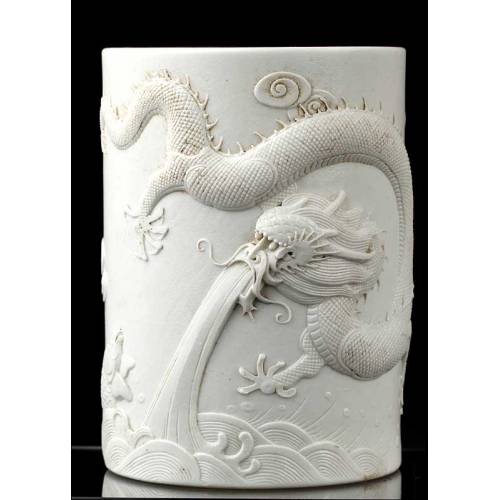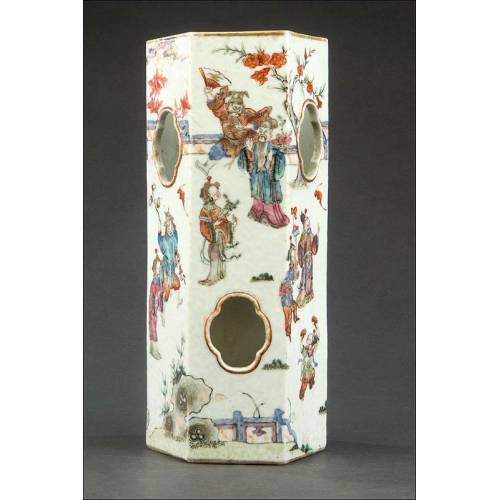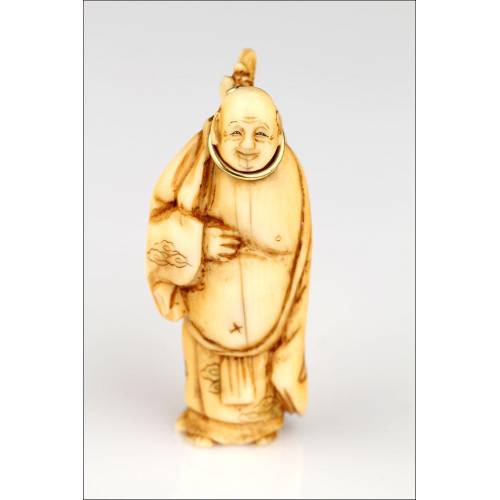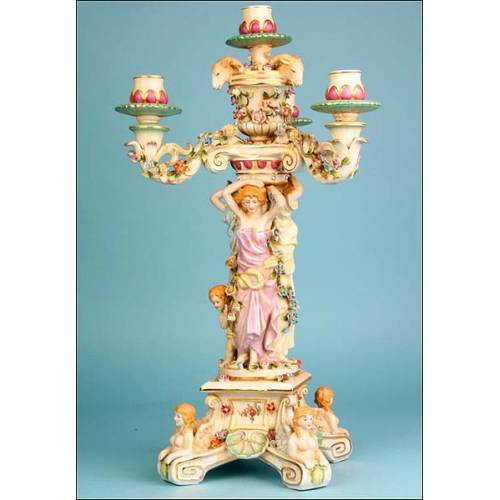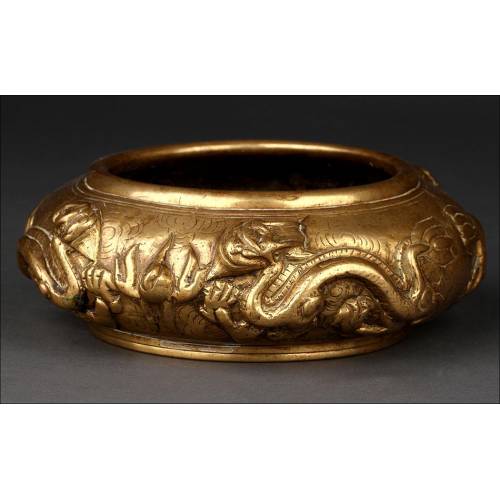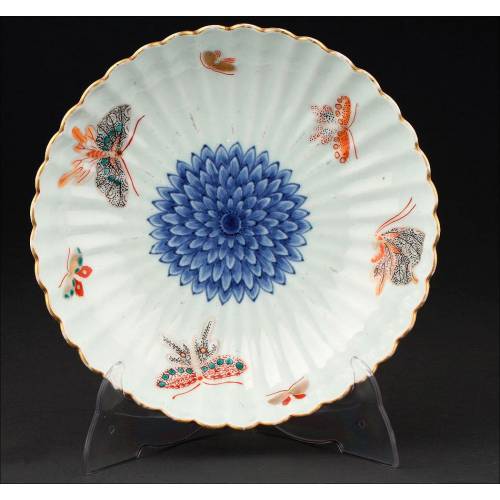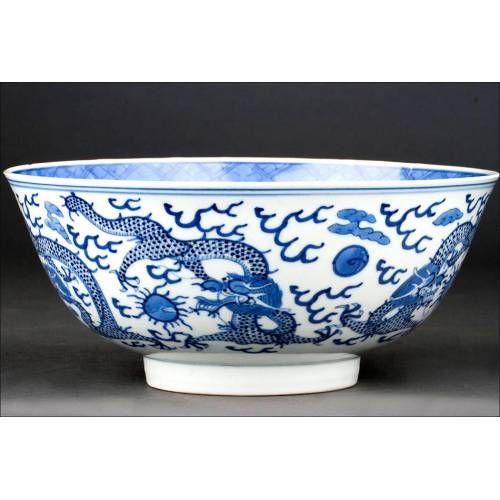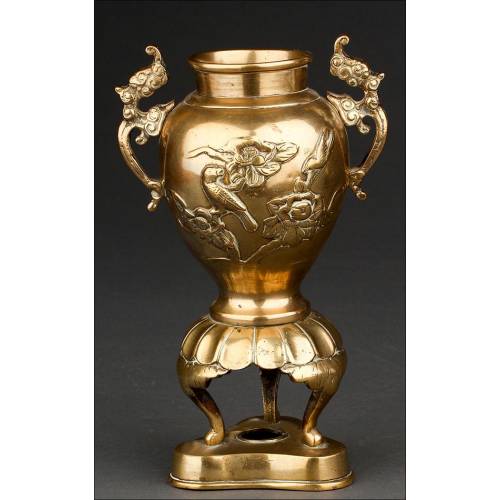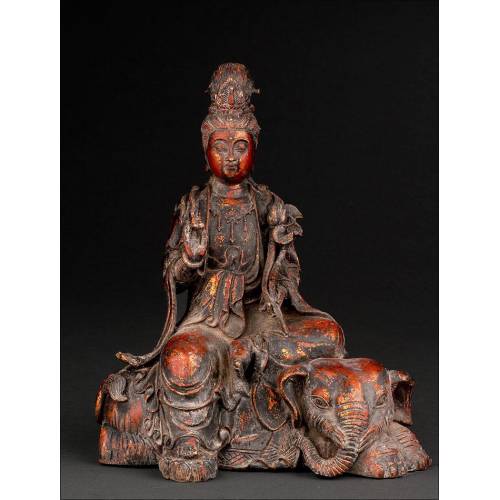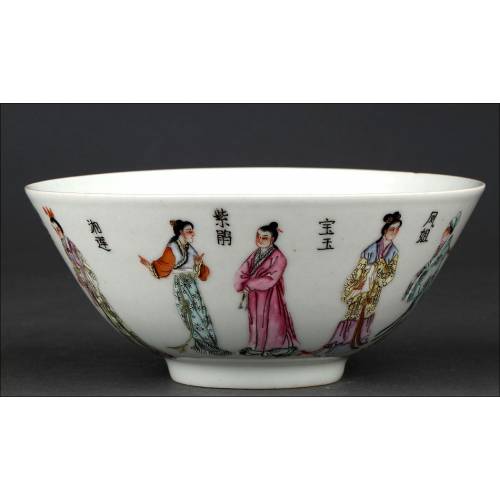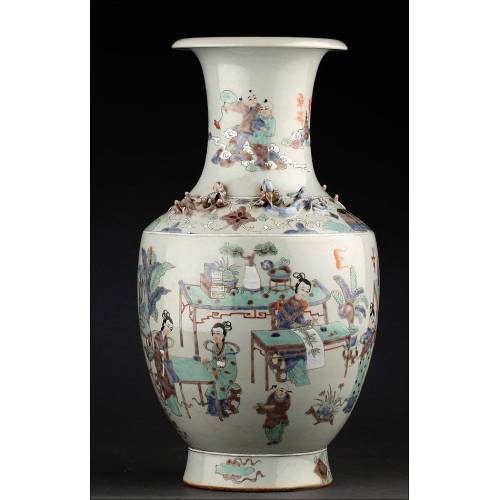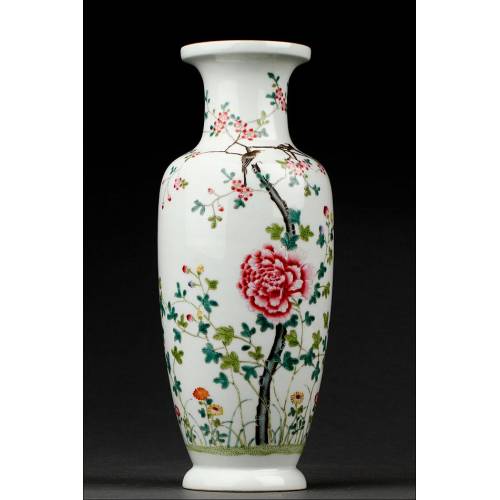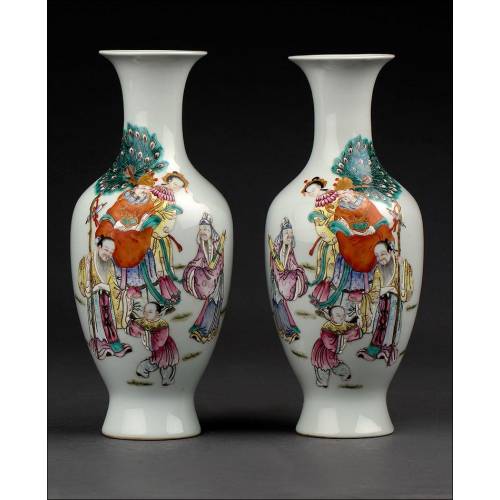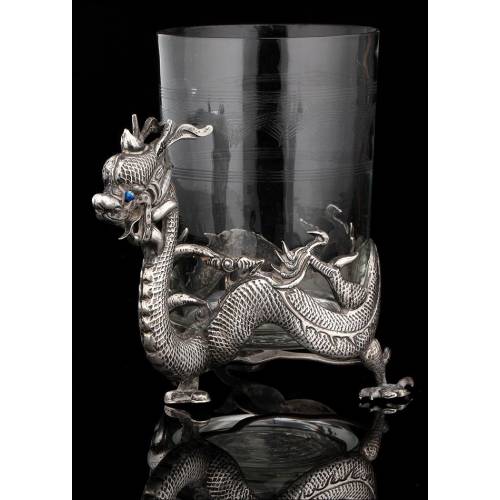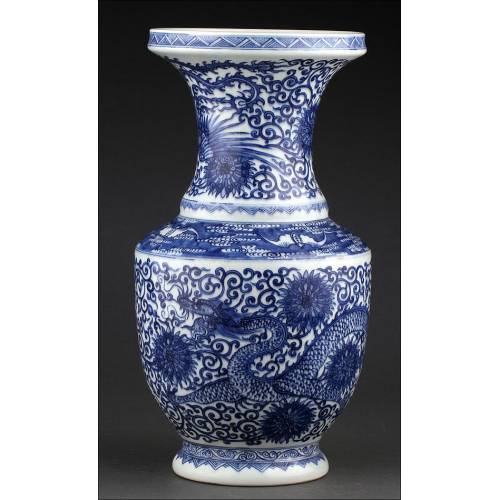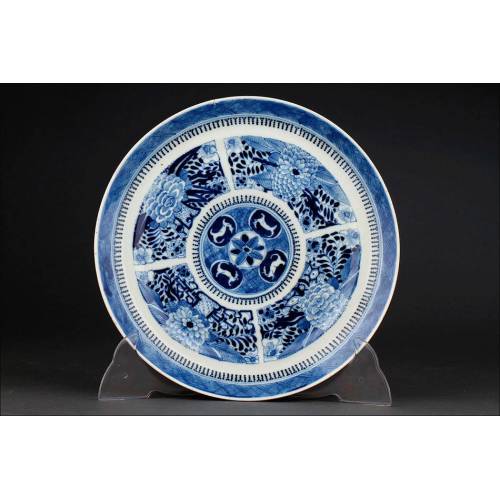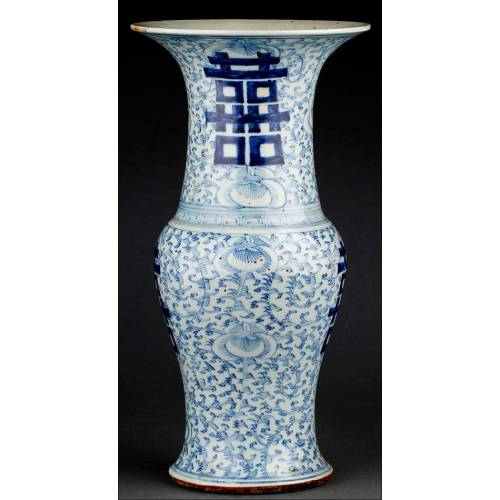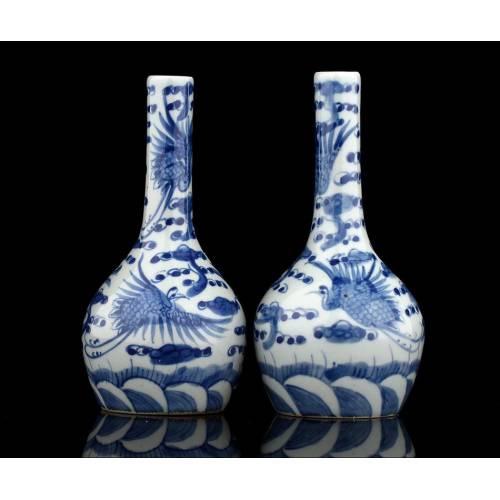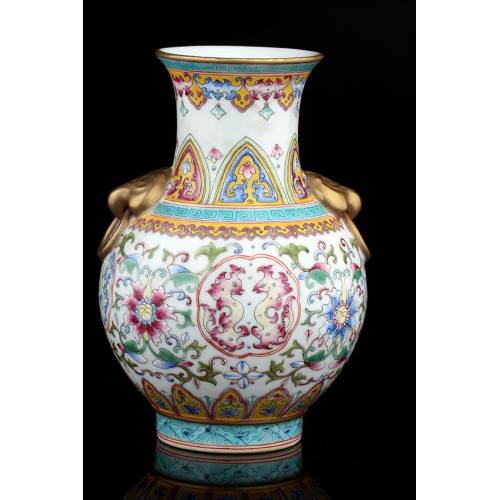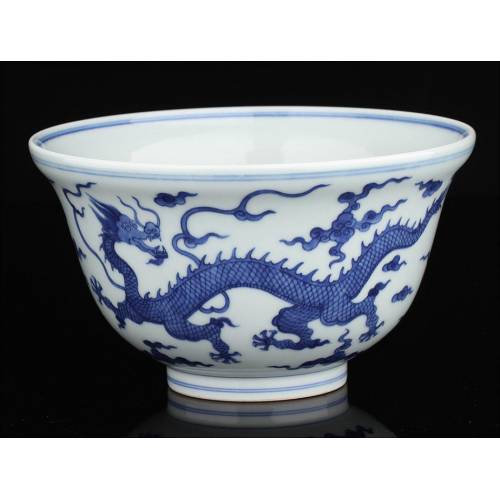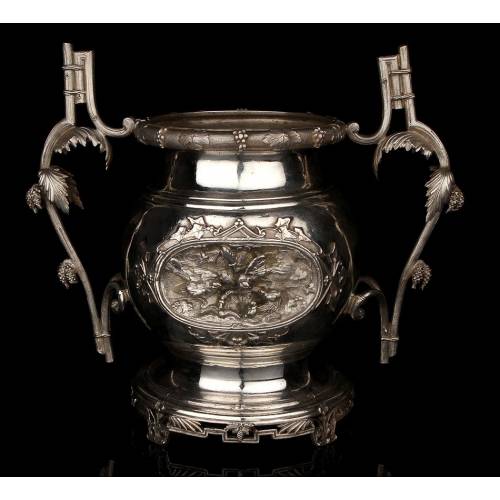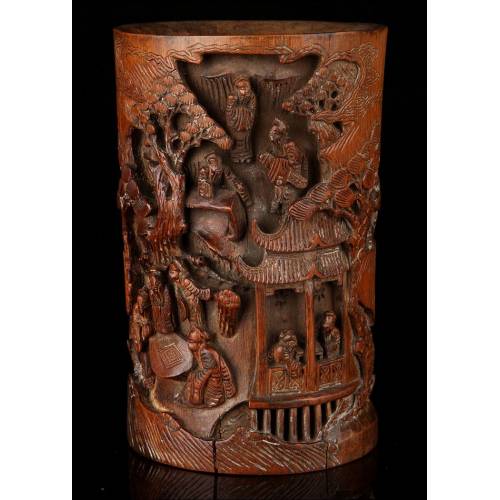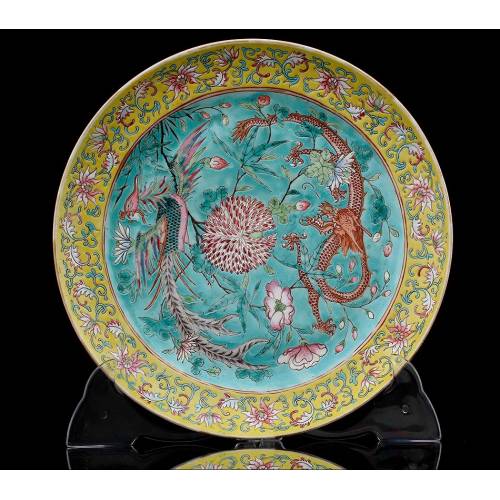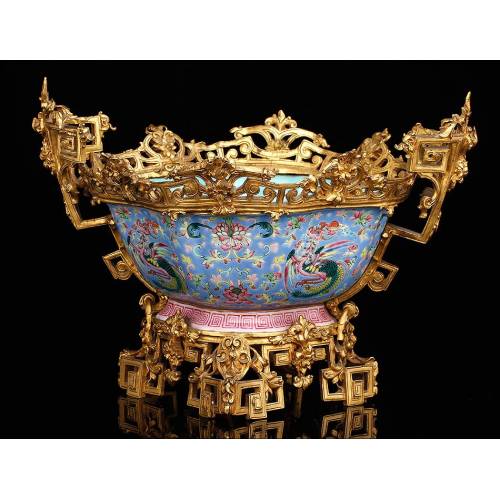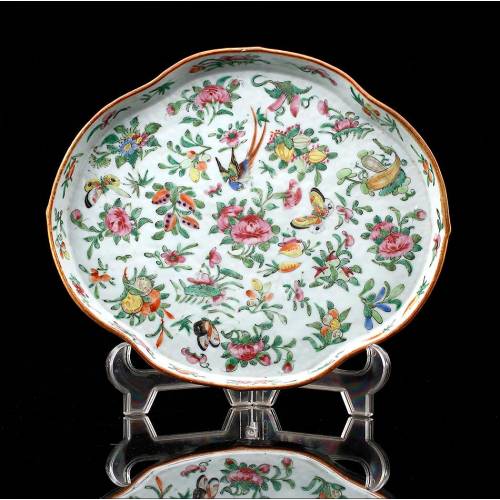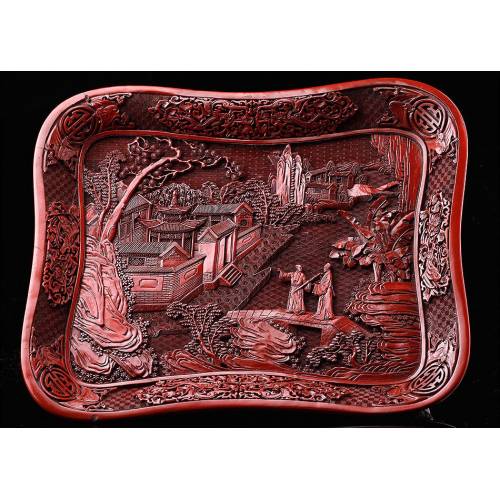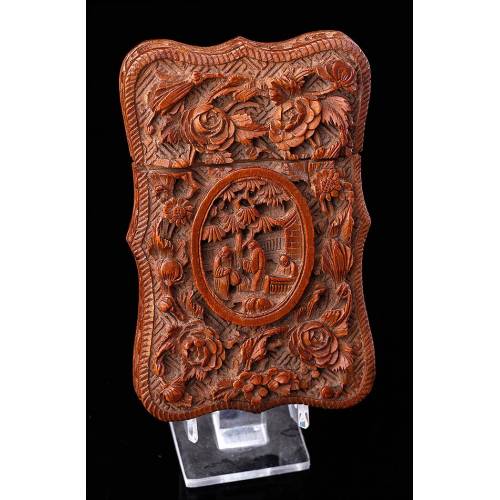J-879
Chinese Porcelain Vases
Exceptional pair of antique Chinese blue and white porcelain antique Chinese vases. With Chenghua Mark,
Sold!
This pair of Chinese blue and white porcelain vases are a unique and special article, very antique and of high aesthetical value. They are hand-made, something that can be stated thanks to their delicate difference of shape and the subtle gradation of tones between them. Blue and white porcelain has been made in China for thousands of years, since it started being manufactured in the ninth century. It reached its highest technical excellence during the Kangxi reign (s. XVII-XVIII). One of these vases bears the red wax seal that indicates that they were made for export. If we turn the vases upside down, we wil discover a Chinese inscription that says: Made during Chenghua reign. Chenghua was a Chinese emperor of the Ming Dynasty who reigned from 1464 to 1487. He was succeeded by Honghzhi emperor. The vases boast a wavy shape which varies slightly from one to another, surely due to their artisanal making on a potters wheel. Their bases also bear the typical furnace mark, a brownish tone which dyes the white porcelain and is due to the heat generated in the furnace during the firing process. The outside of both pieces is profusely decorated with a vegetal-inspired pattern, simple and dense, which depicts schematic lotus flowers with long leafy steams. The neck and the body of each vase bear a Chinese symbol which covers a great part of the surface. The vases are in very good condition, especially if we consider their ancient age. One of them has slight reparations. As elegant as valuable, these vases make up a very special set which will stand out above other Oriental porcelains because of their antiquity and beauty. Measurements: 210 mm width x 410 mm height.

